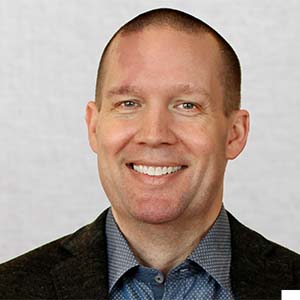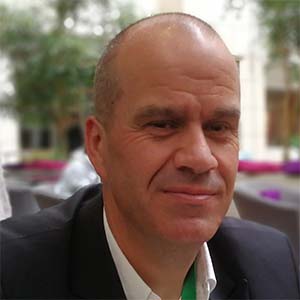Open source has a big role to play in enabling the new trends driving IT and business today.
Kathy Gibson reports from SUSEcon in Prague
Artificial intelligence (AI) and machine learning, data analytics, high performance computing and digital transformation all benefit from open source technologies, says Nils Brauckmann, CEO of SUSE.
He believes that SUSE, which celebrates its 25th birthday this month, is well positioned to play a major role in helping enterprises make their digital transformation journey.
“We have been a true open source pioneer and leader for 15 years,” Brauckmann says. “During those years we have generated a lot of expertise and we are leveraging that today.”
This expertise adds to the value of the Linux operating system as well as new technologies driving software-defined infrastructure.
“For us, digitalisation feels like a very logical evolution,” Brauckmann says. “The operating system has been evolving, and the move to software-defined infrastructure changes the requirement for the operating system.
“Today, it is about the context in which you want to use the operating system. The size and shape of the operating system changes depending on what you want to do with it.
“There are so many different use cases, the form factor of the operating system needs to be able to change and adapt to fit the needs of the environment.”
As an enterprise open source vendor, Brauckmann says SUSE feels comfortable in providing the operating system and also the software-defined infrastructure that is now driving the move to software-defined data centre.
“We are also able to support both the operating system and software-defined environments for our customers,” he says. “Real value comes from the management, security, scalability, service and support.
“We have done that for 25 years. What we have always done for open source technology we will now do for the software-defined technology alongside the operating system.”
 Michael Miller, president of strategies, alliances and marketing, adds that the last year has been a big one for the IT industry as a whole, and for SUSE in particular.
Michael Miller, president of strategies, alliances and marketing, adds that the last year has been a big one for the IT industry as a whole, and for SUSE in particular.
The company has made a number of technology acquisitions, which have allowed the company to make a number of new product and service announcements.
SUSE and the African success story
In just six years, SUSE has gone from just about nowhere to being an enterprise platform leader in South Africa – and the future is bright as companies under pressure to transform look to the open source platform.
 Matthew Lee, sales director: sub-Saharan Africa at SUSE, says the company has clinched key deals in companies across the petroleum, manufacturing, financial services, banking, retail, government and state-owned enterprise sectors.
Matthew Lee, sales director: sub-Saharan Africa at SUSE, says the company has clinched key deals in companies across the petroleum, manufacturing, financial services, banking, retail, government and state-owned enterprise sectors.
SUSE is best known for its SUSE Linux Enterprise Server (SLES) operating system, but Lee points out that the company has been adding products and services to fill out the platform and offer customers some compelling solutions across the stack.
“SUSE has four pillars: Linux, management, cloud and storage,” he explains. “Linux still brings in the lion’s share of our revenue – but the newer pillars are growing fast.”
There has been a huge amount of interest in the software-defined storage offering, SUSE Enterprise Storage. “Storage is going to be a big growth area and we are investing skills and resources in it.”
South African and African customers are largely still testing the water when it comes to widespread cloud of digital adoption, Lee adds.
“They know that costs are a big issue,” he says. “But they know they have to transform themselves if they want to remain relevant.
“Just as every enterprise needs to have an open source strategy, everyone has to have a transformation plan in their business as well.”
This involves looking at their infrastructure, their applications, their mobile strategy, how their applications work with APIs and more.
“The main challenge is that enterprises are not used to agility,” Lee believes. “They have to break the mould of what they are used to, of their infrastructure and IT working the way it has always worked.
“To create agile thinking, companies have to move into the agile space.”
Surveys indicate that a large percentage of line of business operations are already starting to look outside of IT for their applications, and many are signing up with public cloud providers.
“This is a reality now,” Lee stresses. “We are having these conversations with customers, and talking about how to move them on the next stage of their journey.”
Africa is ready to make the move, he adds. “I am very happy at the rate at which Africa is embracing open source.
“The days when we had to motivate on the basis of cost are gone. In fact, many African customers today have an open source-first strategy.”
All of SUSE’s products and services are delivered via the channel. “We leverage and reward the channel heavily for transacting and providing services.”
The local channel has grown substantially and the model is currently being formalised, he adds.
“We don’t want to compete with our partners: instead we put the programmes and processes in place for them to be successful.”
SUSE works on a two-tier channel model, so distributors are an important route to market. In South Africa, the distributors are Mustek and Linux Warehouse.
As customer needs change, along with technology advances, channel partners are changing too, Lee adds.
“Without a shadow of a doubt, the type of partners we work with is changing and expanding. For instance, we have partners coming on board now who specialise in Internet of Things and SAP HANA.”
Alliance partners are also critical, and SUSE has close relationships with the likes of SAP, other independent software vendors (ISVs) and hardware partners.
The partnership with SAP has been particularly successful, Lee says. “Because we are part of the co-innovation lab in South Africa, our customers and partners can build and test an idea in the lab before taking it to market.
Skills development plays a big role in both the channel and end user markets. “I believe in skills, and we are providing an effective programme to help people get skilled.”
Training, which is available via training partners and online, targets end user customers as well as channel partners.
In addition, a new programme aims to get Linux training and certification into the universities.
Multimodal OS to bridge the gap
SUSE is readying a multimodal operating system that will help CIOs bridge the growing gap between Mode 1 and Mode 2 IT operations.
Business realities are driving cloud, software-defined everything and digital transformation. This is focusing attention on the data centre and putting the operating system in the spotlight.
CIOs have to find ways to start migrating systems and services into the cloud, software-enabling parts of the infrastructure and still running their on-premise data centres efficiently, while thinking ahead to accommodate new technologies like Internet of Things (IoT), big data analytics and more.
For want of a better term, the industry refers to these two different types of environment as Mode 1 and Mode 2, with Mode 1 referring to the legacy IT environment and Mode 2 the place where new agile development takes place.
To a large extent, Mode 1 operations take place in the physical infrastructure, while Mode 2 tends to happen in the virtual, cloud-enabled or software-defined space, using application development services like containers and Cloud Foundry.
Today, most companies have set up some kind of Mode1/Mode 2 operations. However, they are quickly discovering that running two separate systems comes with a new set of challenges around integration and interoperability.
Next month, SUSE will announce a public beta of SUSE Linux Enterprise System 15 (SLES 15), the newest version of its enterprise-grade operating system, designed for multimodal IT environments.
“The objective is to bridge the two environments, allowing seamless interoperability from Mode 1 to Mode 2 and back,” explains Raj Meel, product marketing manager at SUSE.
As well as operating in various modes, SLES 15 is designed to run on just about any device as well.
“We have started with a common code base, so every instance of SLES 15 is always based on the same source code,” says Kai Dupke, senior product manager at SUSE. “SLES 15 and SUSE OpenStack also run the same kernel.”
This means all hardware — whether it’s based on Intel, Power, ARM or Ryzen — uses the same source code. “So the same operating system can run on a mainframe computer and on a Rapberry Pi,” Dupke explains.
“We talk about software-defined everything, but we are still bound to hardware at some point. With SLES 15 there will be one operating system for any hardware and for any application.
“There is also one unified installation, so administrators only have to download one installer — which is smaller than the one we use today — and they can install everything.”
The ability to run a single operating system for any hardware or application translates to a better-quality, but less complex IT environment that is suited for traditional on-premise data centres, a software-defined infrastructure or the cloud.
Staff can easily move from one environment to another without having to be retrained, while a common platform will reduce service and support challenges.
Additional services from SUSE like containers as a service (CaaS) and Cloud Application Platform work seamlessly with SLES 15. The interoperability across environments is particularly important here to ensure the containers run every time, regardless of the platform.
“We believe this is a somewhat unique value proposition,” Dupke says. “Companies can choose to work hard or to work smart — we think this will help them work smart.”
SLES 15 will go into public beta in October, and is expected to start shipping in the second quarter of 2018.
